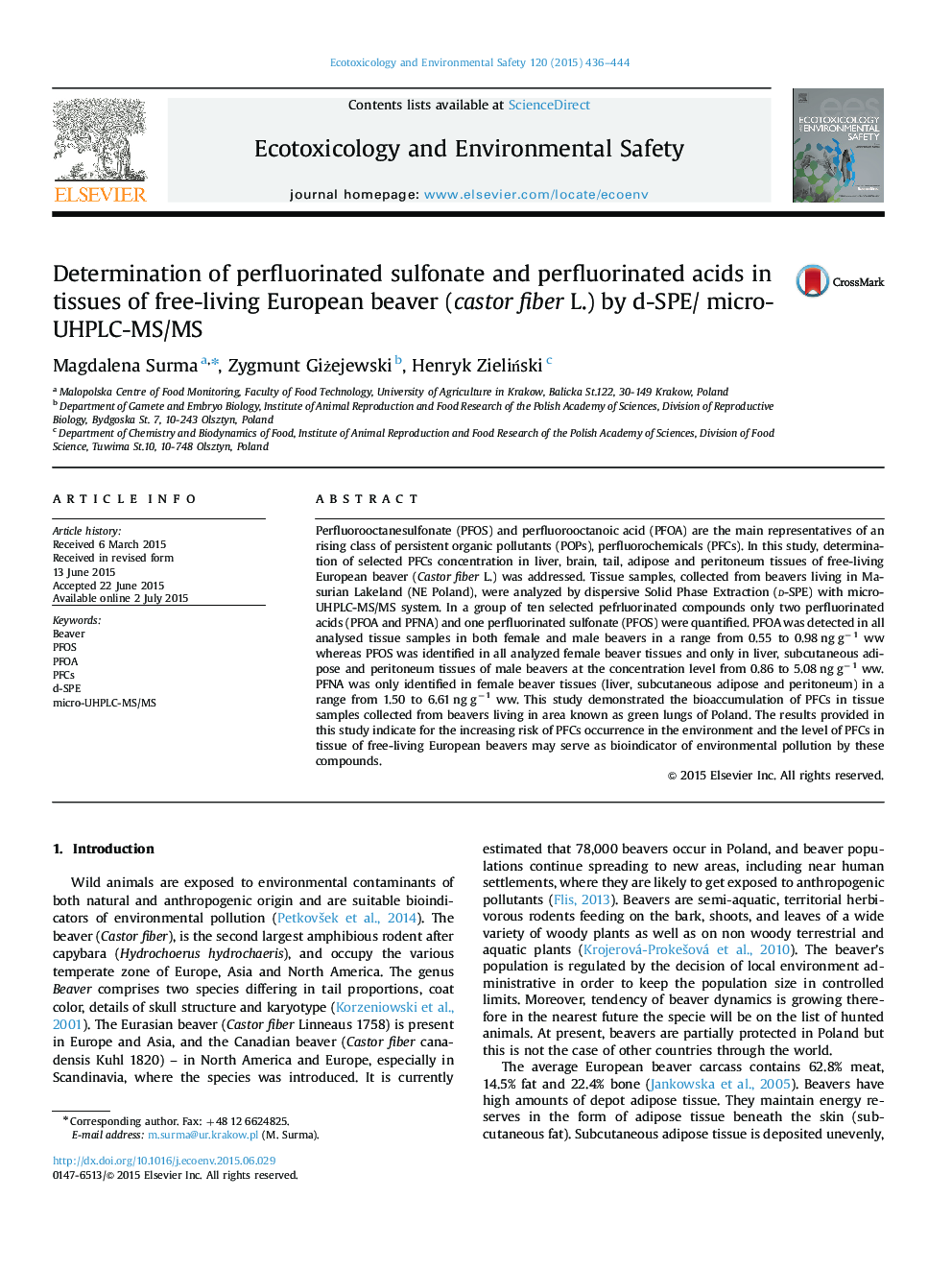| Article ID | Journal | Published Year | Pages | File Type |
|---|---|---|---|---|
| 4419401 | Ecotoxicology and Environmental Safety | 2015 | 9 Pages |
•The micro-UHPLC-MS/MS system was applicable for measurement of PFCs in tissues.•PFOA, PFOS and PFNA were detected in selected tissues of free-living beavers.•PFOA was able to across the blood–brain barrier in beavers.•Beavers may serve as bioindicator of environmental pollution by PFCs, especially by PFOA.
Perfluorooctanesulfonate (PFOS) and perfluorooctanoic acid (PFOA) are the main representatives of an rising class of persistent organic pollutants (POPs), perfluorochemicals (PFCs). In this study, determination of selected PFCs concentration in liver, brain, tail, adipose and peritoneum tissues of free-living European beaver (Castor fiber L.) was addressed. Tissue samples, collected from beavers living in Masurian Lakeland (NE Poland), were analyzed by dispersive Solid Phase Extraction (d-SPE) with micro-UHPLC-MS/MS system. In a group of ten selected pefrluorinated compounds only two perfluorinated acids (PFOA and PFNA) and one perfluorinated sulfonate (PFOS) were quantified. PFOA was detected in all analysed tissue samples in both female and male beavers in a range from 0.55 to 0.98 ng g−1 ww whereas PFOS was identified in all analyzed female beaver tissues and only in liver, subcutaneous adipose and peritoneum tissues of male beavers at the concentration level from 0.86 to 5.08 ng g−1 ww. PFNA was only identified in female beaver tissues (liver, subcutaneous adipose and peritoneum) in a range from 1.50 to 6.61 ng g−1 ww. This study demonstrated the bioaccumulation of PFCs in tissue samples collected from beavers living in area known as green lungs of Poland. The results provided in this study indicate for the increasing risk of PFCs occurrence in the environment and the level of PFCs in tissue of free-living European beavers may serve as bioindicator of environmental pollution by these compounds.
Graphical abstractFigure optionsDownload full-size imageDownload as PowerPoint slide
